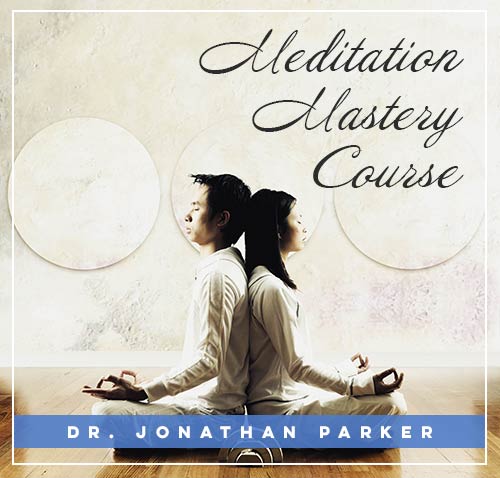Can’t Meditate? Here’s What to Do

TRANSLATE BUTTON AT THE END OF THE ARTICLE
A Quick Overview
Meditation is a powerful practice that offers numerous benefits for our mental and physical well-being.
However, many people struggle with meditation, finding it challenging to quiet their minds and connect with their inner selves.
If you’re one of those who can’t seem to meditate effectively, don’t worry – you’re not alone.
There are common roadblocks that may be hindering your progress, but with some understanding, patience, and practical tips, you can overcome these obstacles and reap the rewards of a consistent meditation practice.
Why You Can’t Meditate: Common Roadblocks
Overactive Mind: One of the most common reasons people struggle with meditation is an overactive mind that refuses to be still.
Racing thoughts, worries, and to-do lists can create a constant stream of mental chatter, making it challenging to focus during meditation.
Lack of Patience: Meditation is a skill that requires time and practice to develop.
If you’re expecting immediate results or feeling frustrated because progress seems slow, impatience can become a significant roadblock to your practice.
Physical Discomfort: Sitting still for an extended period can be uncomfortable, especially if you’re not used to it.
Physical discomfort, such as back pain or stiffness, can distract you from your meditation and make it challenging to relax.
Resistance to Change: Some individuals may resist meditation because it involves stepping out of their comfort zones and confronting their thoughts and emotions.
This resistance can manifest as procrastination or avoidance of the practice altogether.
High Expectations: Expecting to experience deep states of relaxation, spiritual insights, or immediate stress relief during meditation can set unrealistic expectations.
When these expectations are not met, it can lead to disappointment and frustration, further hindering your ability to meditate effectively.
Understanding Your Resistance to Meditation
Understanding the reasons behind your resistance to meditation is the first step towards overcoming these obstacles.
Take some time to reflect on your feelings and thoughts about meditation.
Are you anxious about sitting still?
Do you struggle with racing thoughts?
Identifying the root cause of your resistance can help you address these issues more effectively.
It’s also essential to acknowledge that resistance to meditation is normal and common.
Many people face similar challenges when starting their meditation practice.
By recognizing that you’re not alone in your struggles, you can approach meditation with compassion and understanding for yourself.
Moreover, consider any preconceived notions or misconceptions you may have about meditation.
It’s essential to approach the practice with an open mind and without judgment.
Allow yourself to explore meditation without placing rigid expectations on yourself or the outcome.
Finally, be patient and gentle with yourself during this process.
Meditation is a journey that requires time, practice, and self-compassion.
Embrace any resistance or challenges you encounter as opportunities for growth and self-discovery.
Overcoming Mental Blocks to Meditation
Start Small: If you’re struggling with meditation, begin with short sessions of just a few minutes each day.
Gradually increase the duration as you become more comfortable with the practice.
Focus on Breath: Concentrating on your breath can help anchor your mind and quiet racing thoughts.
Pay attention to the sensation of each inhale and exhale to stay present during meditation.
Use Guided Meditations: Guided meditations provide structure and support for your practice, making it easier to relax and focus.
There are numerous free resources available online to guide you through meditation sessions.
Practice Mindfulness: Incorporating mindfulness into your daily activities can help cultivate the awareness and presence needed for meditation.
Pay attention to your surroundings, sensations, and emotions throughout the day.
Release Expectations: Let go of any expectations or judgments you have about your meditation practice.
Embrace each session as it is, without placing pressure on yourself to achieve specific outcomes.
Stay Consistent: Consistency is key to overcoming mental blocks in meditation.
Establish a regular meditation routine and stick to it, even on days when you feel resistant or distracted.
Seek Support: Joining a meditation group or seeking guidance from a teacher can provide additional motivation and accountability for your practice.
Surround yourself with like-minded individuals who can support you on your meditation journey.
Practice Self-Compassion: Be kind and compassionate towards yourself, especially when facing challenges in meditation.
Treat yourself with the same care and understanding you would offer a close friend.
Celebrate Small Wins: Acknowledge and celebrate the progress you make in your meditation practice, no matter how small.
Recognizing your achievements can help build confidence and momentum for future sessions.
Stay Curious: Approach meditation with a sense of curiosity and exploration.
Embrace the opportunity to learn more about yourself and your mind through the practice of meditation.
Practical Tips for Beginners in Meditation
Set Realistic Goals: Start with achievable goals for your meditation practice, such as meditating for five minutes a day.
Gradually increase the duration as you become more comfortable.
Create a Sacred Space: Designate a quiet, clutter-free space for your meditation practice.
Surround yourself with items that promote relaxation, such as candles, cushions, or soothing music.
Establish a Routine: Incorporate meditation into your daily routine at a consistent time.
Whether it’s in the morning before work or in the evening before bed, find a time that works best for you and stick to it.
Experiment with Different Techniques: Explore various meditation techniques, such as mindfulness, loving-kindness, or body scan meditation.
Find a method that resonates with you and brings you the most peace.
Use Props: If sitting on the floor is uncomfortable, consider using props like cushions or a meditation bench to support your posture.
Experiment with different positions until you find one that works for you.
Stay Hydrated: Drink water before and after your meditation practice to stay hydrated and promote mental clarity.
Hydration can also help reduce physical discomfort during extended meditation sessions.
Take Breaks: If you’re feeling overwhelmed or restless during meditation, don’t hesitate to take short breaks.
Stand up, stretch, or walk around to release tension and refocus your mind.
Practice Gratitude: Begin and end your meditation sessions with a moment of gratitude.
Reflect on the positive aspects of your life and cultivate a sense of appreciation for the present moment.
Journal Your Thoughts: Keep a meditation journal to record your thoughts, emotions, and experiences during each session.
Writing can help you process your feelings and track your progress over time.
Be Patient with Yourself: Remember that meditation is a practice, not a perfect.
Be patient with yourself as you navigate the ups and downs of your meditation journey.
Embrace each moment as an opportunity for growth and self-discovery.
Exploring Alternative Meditation Techniques
If traditional sitting meditation doesn’t resonate with you, there are numerous alternative techniques you can explore to cultivate mindfulness and relaxation.
Here are some alternative meditation practices to consider:
Walking Meditation: Engage in walking meditation by focusing on each step and breath as you move mindfully.
This practice can be particularly beneficial for individuals who struggle with sitting still.
Yoga: Incorporate yoga into your routine to combine movement with mindfulness.
Yoga postures, known as asanas, can help you connect with your body and breath while promoting flexibility and strength.
Tai Chi: Practice Tai Chi, a gentle form of martial arts that emphasizes slow, flowing movements and deep breathing.
Tai Chi can improve balance, coordination, and overall well-being.
Mantra Meditation: Repeat a calming mantra or affirmation during meditation to anchor your mind and cultivate positive thoughts.
Mantra meditation can help reduce stress and promote mental clarity.
Visualization: Visualize a peaceful scene or positive outcome during meditation to enhance relaxation and focus.
Visualization techniques can stimulate your imagination and deepen your meditation experience.
The Importance of Consistency in Meditation
Consistency is key when it comes to reaping the benefits of meditation.
Establishing a regular practice and sticking to it can help you build momentum, deepen your focus, and experience lasting changes in your mental and physical well-being.
Here are some reasons why consistency is crucial in meditation:
Neuroplasticity: Consistent meditation practice can create lasting changes in the brain’s neural pathways, leading to improved focus, emotional regulation, and stress management over time.
Habit Formation: By meditating at the same time and place each day, you can create a habit that becomes ingrained in your routine.
Regular practice makes it easier to sustain your meditation practice in the long run.
Progress Tracking: Consistency allows you to track your progress and observe the changes in your thoughts, emotions, and behaviors over time.
By monitoring your meditation practice, you can celebrate achievements and identify areas for growth.
Emotional Regulation: Regular meditation can help you develop emotional resilience and regulate your responses to stress, anxiety, and other challenging emotions.
Consistent practice cultivates a sense of calm and equanimity in daily life.
Mindfulness Integration: Consistent meditation practice can enhance your mindfulness in everyday activities.
By bringing awareness to your thoughts and actions throughout the day, you can cultivate a deeper sense of presence and appreciation for the present moment.
Dealing with Physical Discomfort while Meditating
Physical discomfort is a common challenge for many individuals during meditation.
Whether you’re experiencing back pain, leg cramps, or general stiffness, it’s essential to address these issues to create a more comfortable meditation experience.
Here are some tips for dealing with physical discomfort while meditating:
Adjust Your Posture: Find a comfortable seated position that supports your spine and allows for easy breathing.
Experiment with different postures, such as sitting on a cushion or chair, to alleviate pressure on your joints and muscles.
Use Props: Consider using props like cushions, blankets, or meditation benches to support your posture and reduce physical strain.
Props can help you maintain a relaxed and upright position during meditation.
Stretch Before Meditation: Incorporate gentle stretches or yoga poses into your pre-meditation routine to loosen tight muscles and improve flexibility.
Stretching can release tension and prepare your body for a more comfortable meditation session.
Take Breaks: If you’re experiencing intense discomfort during meditation, don’t hesitate to take short breaks to stretch or adjust your position.
Listen to your body’s cues and make necessary adjustments to alleviate physical strain.
Mindful Movement: Integrate mindful movement practices like gentle yoga or Tai Chi into your meditation routine.
Movement can help release physical tension, increase circulation, and promote relaxation before sitting for meditation.
Focus on Breath: Direct your attention to your breath during meditation to anchor your mind and reduce physical discomfort.
By focusing on the sensation of each inhale and exhale, you can create a sense of calm and relaxation in your body.
Practice Self-Compassion: Be gentle and kind to yourself when experiencing physical discomfort during meditation.
Release any judgments or frustrations and approach your body with care and understanding.
Consult a Professional: If you’re experiencing chronic or severe physical discomfort during meditation, consider consulting a healthcare professional or physical therapist for guidance.
They can offer personalized recommendations to address your specific needs.
Stay Hydrated: Drink water before and after your meditation practice to stay hydrated and prevent muscle cramps or stiffness.
Hydration is essential for maintaining physical comfort and mental clarity during meditation.
Listen to Your Body: Above all, listen to your body’s signals and adjust your meditation practice accordingly.
Honor your physical limitations and make modifications that support your comfort and well-being during meditation.
Creating a Comfortable Meditation Space
Designing a comfortable and inviting meditation space can enhance your practice and create a conducive environment for relaxation and focus.
Here are some tips for creating a comfortable meditation space:
Choose a Quiet Location: Select a quiet and peaceful location for your meditation practice to minimize distractions and promote a sense of calm.
Find a space free from loud noises or interruptions to create a tranquil atmosphere.
Declutter Your Space: Clear out any clutter or unnecessary items from your meditation space to create a sense of openness and tranquility.
A clean and organized environment can help clear your mind and support focused meditation.
Set the Mood: Create a soothing ambiance in your meditation space with soft lighting, calming colors, and natural elements.
Consider adding candles, incense, or essential oils to enhance relaxation and promote mindfulness.
Use Comfortable Seating: Choose a comfortable chair, cushion, or meditation bench to support your posture during meditation.
Ensure that your seating aligns your spine and allows for relaxed breathing throughout your practice.
Personalize Your Space: Add personal touches to your meditation space, such as meaningful objects, inspiring quotes, or plants.
Surround yourself with items that bring you joy and create a sense of peace in your practice area.
Create a Ritual: Establish a pre-meditation ritual to signal the beginning of your practice and transition into a focused state of mind.
This could include lighting a candle, taking a few deep breaths, or setting an intention for your meditation session.
Maintain Proper Ventilation: Ensure adequate ventilation in your meditation space to promote fresh air circulation and create a comfortable environment for deep breathing.
Consider opening a window or using a fan to regulate temperature and airflow.
Minimize Distractions: Remove any distractions, such as electronic devices, clutter, or loud noises, from your meditation space.
Create a serene and focused environment that allows you to fully immerse yourself in your practice.
Establish Boundaries: Communicate with others in your household about your meditation practice and establish boundaries to minimize interruptions.
Encourage respect for your practice space and time to cultivate a sense of sacredness and focus.
Practice Gratitude: Express gratitude for your meditation space and the opportunity to cultivate mindfulness and self-care.
Reflect on the blessings and beauty of your surroundings to create a sense of appreciation and peace during your practice.
Addressing Distractions during Meditation
Distractions are a common challenge during meditation, especially for beginners or those with busy minds.
Learning to address distractions effectively can help you stay focused and present during your practice.
Here are some tips for addressing distractions during meditation:
Acknowledge the Distraction: When you notice a distraction, acknowledge its presence without judgment.
Recognize that distractions are a natural part of the meditation process and an opportunity to practice mindfulness.
Return to Your Breath: Redirect your attention back to your breath whenever you notice a distraction.
Focus on the sensation of each inhale and exhale to anchor your mind and cultivate presence in the moment.
Label the Distraction: If a distraction persists, label it briefly to acknowledge its nature.
For example, if you hear a noise, silently label it as “hearing” before returning your focus to your breath.
Cultivate Non-Attachment: Practice non-attachment to distractions by observing them without becoming emotionally entangled.
Allow distractions to come and go without resisting or engaging with them, maintaining a sense of equanimity.
Use Guided Meditations: Guided meditations can provide structure and support for your practice, helping you stay focused and engaged.
Follow the guidance of a teacher or meditation app to navigate distractions effectively.
Practice Loving-Kindness: Extend loving-kindness towards distractions by viewing them with compassion and understanding.
Approach distractions with a sense of curiosity and acceptance rather than frustration or resistance.
Ground Yourself: If distractions feel overwhelming, ground yourself by focusing on your body and physical sensations.
Feel the support of the earth beneath you and anchor yourself in the present moment to reduce mental chatter.
Set Intentions: Before starting your meditation session, set an intention to stay present and focused throughout the practice.
Clarify your purpose for meditating and commit to returning to your breath whenever distractions arise.
Release Judgment: Let go of any judgments or criticisms towards distractions that arise during meditation.
Cultivate a sense of openness and curiosity towards your thoughts and emotions without attaching value judgments to them.
Practice Patience: Be patient with yourself as you navigate distractions during meditation.
Accept that distractions are a natural part of the practice and an opportunity for growth and self-awareness.
Embrace each distraction as a chance to deepen your mindfulness and presence.
Developing a Routine for Successful Meditation
Establishing a consistent meditation routine is essential for building a sustainable practice and reaping the benefits of mindfulness and relaxation.
Here are some tips for developing a successful meditation routine:
Set Realistic Goals: Start with achievable goals for your meditation practice, such as meditating for five minutes a day.
Gradually increase the duration as you become more comfortable.
Choose a Convenient Time: Select a time of day that works best for your schedule and energy levels.
Whether it’s in the morning, during lunch break, or before bed, find a time when you can commit to your practice without feeling rushed or distracted.
Create a Ritual: Establishing a pre-meditation ritual can help signal to your mind that it’s time to transition into a focused state.
This could involve lighting a candle, taking a few deep breaths, or setting an intention for your session.
A ritual can help you mentally prepare for meditation and enhance the overall experience.
Designate a Meditation Space: Choose a quiet and comfortable space where you can meditate regularly.
Ideally, this space should be free from distractions and conducive to relaxation.
You can personalize it with items that promote a sense of peace and tranquility, such as cushions, candles, or plants.
Start Small: If you’re new to meditation or struggling with consistency, begin with short sessions of just a few minutes each day.
Gradually increase the duration as you become more accustomed to the practice.
Starting small can help you build momentum and establish a habit without feeling overwhelmed.
Use Guided Meditations: Guided meditations can be particularly helpful for beginners or anyone struggling to stay focused during meditation.
They provide structure and guidance, helping you navigate distractions and deepen your practice.
There are many resources available online, including apps and websites offering guided sessions tailored to different needs and preferences.
Stay Consistent: Consistency is key to developing a successful meditation routine.
Aim to meditate at the same time and place each day, if possible, to reinforce the habit.
Even on days when you feel resistant or distracted, commit to showing up for your practice.
Over time, consistency will help meditation become a natural part of your daily routine.
Be Patient and Persistent: Like any skill, meditation requires patience and persistence to develop.
Be gentle with yourself if you miss a session or find it challenging to focus.
Instead of giving up, acknowledge the obstacles you face and recommit to your practice with a compassionate attitude.
Each meditation session, regardless of its perceived quality, contributes to your growth and progress.
Seek Support: Joining a meditation group or seeking guidance from a teacher can provide additional motivation and accountability for your practice.
Connecting with like-minded individuals can also offer encouragement and insights that enhance your meditation journey.
Reflect and Adjust: Regularly reflect on your meditation practice to assess what’s working well and where you might need adjustments.
Notice any patterns or challenges that arise and consider how you can adapt your routine to better support your goals.
Meditation is a personal journey, and your practice may evolve over time as you deepen your understanding and experience.
By incorporating these tips into your meditation routine, you can establish a foundation for success and enjoy the many benefits that meditation has to offer.
Remember that consistency, patience, and self-compassion are key elements in developing a sustainable practice that supports your overall well-being.

The Enlightenment Journey is a remarkable collection of writings authored by a distinguished group of experts in the fields of spirituality, new age, and esoteric knowledge.
This anthology features a diverse assembly of well-experienced authors who bring their profound insights and credible perspectives to the forefront.
Each contributor possesses a wealth of knowledge and wisdom, making them authorities in their respective domains.
Together, they offer readers a transformative journey into the realms of spiritual growth, self-discovery, and esoteric enlightenment.
The Enlightenment Journey is a testament to the collective expertise of these luminaries, providing readers with a rich tapestry of ideas and information to illuminate their spiritual path.
Our Diverse Expertise 🌟
While our primary focus is on spirituality and esotericism, we are equally passionate about exploring a wide range of other topics and niches 🌍📚. Our experienced team is dedicated to delivering high-quality, informative content across various subjects ✨.
To ensure we provide the most accurate and valuable insights, we collaborate with trusted experts in their respective domains 🧑🏫👩🏫. This allows us to offer well-rounded perspectives and knowledge to our readers.
Our blog originally focused on spirituality and metaphysics, but we’ve since expanded to cover a wide range of niches. Don’t worry—we continue to publish a lot of articles on spirituality! Frequently visit our blog to explore our diverse content and stay tuned for more insightful reads.




















